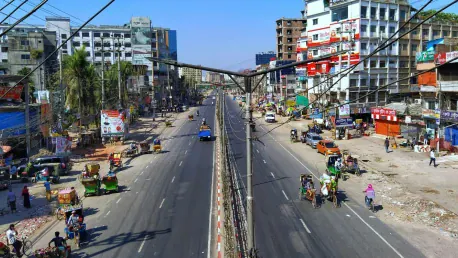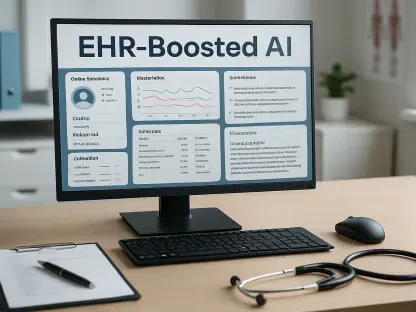In 2024, Bangladesh faced an alarming dengue outbreak that overwhelmed healthcare systems, impacted lives, and prompted urgent action. This mosquito-borne viral infection, causing widespread concern annually, reached unprecedented levels, demanding immediate attention and intervention.
The Rising Threat: Why the 2024 Dengue Outbreak Demands Attention
Understanding the dengue outbreak in Bangladesh in 2024 is imperative. With increasing frequency and intensity, dengue fever is becoming a significant public health threat in tropical regions like Bangladesh. The outbreak not only increased morbidity rates but also put tremendous pressure on medical facilities and resources. Analyzing the outbreak’s key findings can illuminate gaps in public health preparedness and inform future strategies.
Connecting the Dots: The Impact on Public Health and Policy
The 2024 dengue outbreak had a far-reaching impact on public health and policy. Hospitals were inundated with patients presenting severe symptoms, challenging healthcare professionals. The outbreak exposed vulnerabilities in the healthcare system and emphasized the need for robust public health policies to manage and prevent future outbreaks effectively.
Epidemiological Insights: Age and Gender Disparities in Dengue Cases
An in-depth analysis of the key findings from the 2024 dengue outbreak reveals significant age and gender disparities among affected individuals. Predominantly, young adult males were most affected, with a striking majority residing in urban areas. This demographic trend underscores the importance of targeted interventions and awareness campaigns to reduce infection rates in these vulnerable groups.
Clinical Characteristics: Unmasking Common Symptoms and Severe Manifestations
Fever, headache, myalgia, and arthralgia were the most common symptoms reported during the outbreak. However, gastrointestinal symptoms such as nausea and abdominal pain were also prominent. Severe manifestations, including bleeding and respiratory symptoms, highlighted the complexity of the disease and the necessity of timely medical intervention.
Laboratory Revelations: Blood Profiles and Biochemical Markers of Infected Patients
Laboratory findings provided crucial insights into the disease’s progression. Patients’ blood profiles revealed elevated hematocrit levels, low platelet counts, and heightened ALT and AST levels, indicating distressing physiological changes. These markers are essential for diagnosing and monitoring disease severity, aiding healthcare providers in delivering appropriate care.
Comparative Severity: Groups at Risk and Warning Signs Predicting Critical Outcomes
Certain groups of patients demonstrated a higher risk of developing severe dengue, characterized by symptoms like dizziness, fatigue, and signs of plasma leakage. Identifying these critical markers is paramount for early detection and intervention, reducing the risk of fatal outcomes.
Voices from the Frontline: Testimonies from Healthcare Professionals
Healthcare professionals on the frontline shared harrowing accounts of the 2024 outbreak. They faced enormous challenges managing the increased patient influx while coping with limited resources. Their testimonies highlight the importance of bolstering healthcare infrastructure to better prepare for future outbreaks.
Research Perspectives: Findings from Multicenter Studies
Research conducted across multiple centers provided valuable data on the outbreak’s scope and severity. These studies revealed the dynamic nature of dengue virus serotypes and their varying clinical presentations, emphasizing the need for continuous monitoring and adaptive response strategies.
Patient Stories: Personal Accounts of Battle with Severe Dengue
Personal narratives from patients who battled severe dengue bring a human element to the statistical data. These stories of resilience and recovery offer a poignant reminder of the disease’s impact on individuals and their families, underscoring the need for comprehensive support systems.
Practical Strategies for Future Outbreaks
Early Detection: Key Symptoms to Monitor
Early detection is crucial in managing dengue outbreaks. Monitoring symptoms such as high fever, severe headache, and joint pain can facilitate prompt diagnosis and treatment, reducing the risk of severe complications.
Effective Management: Recommended Care Protocols
Implementing effective care protocols, including fluid management and symptomatic relief, is vital in treating dengue patients. These protocols ensure consistent and high-quality care, improving patient outcomes and reducing hospital stay durations.
Public Health Interventions: Strategic Measures to Prevent Future Outbreaks
Preventing future outbreaks requires strategic public health interventions. These include vector control measures, public awareness campaigns, and vaccination programs. Such initiatives can significantly reduce the incidence of dengue and protect public health.
Conclusion
The 2024 dengue outbreak in Bangladesh revealed several critical insights, from demographic patterns and clinical symptoms to laboratory markers and patient stories. This data underlines the importance of understanding and preparing for dengue’s evolving landscape. Future efforts should focus on early detection, effective management protocols, and robust public health interventions to mitigate the impact of such outbreaks. Moving forward, it is essential to strengthen healthcare infrastructure, prioritize research, and implement preventive measures to safeguard the population from similar health crises.









